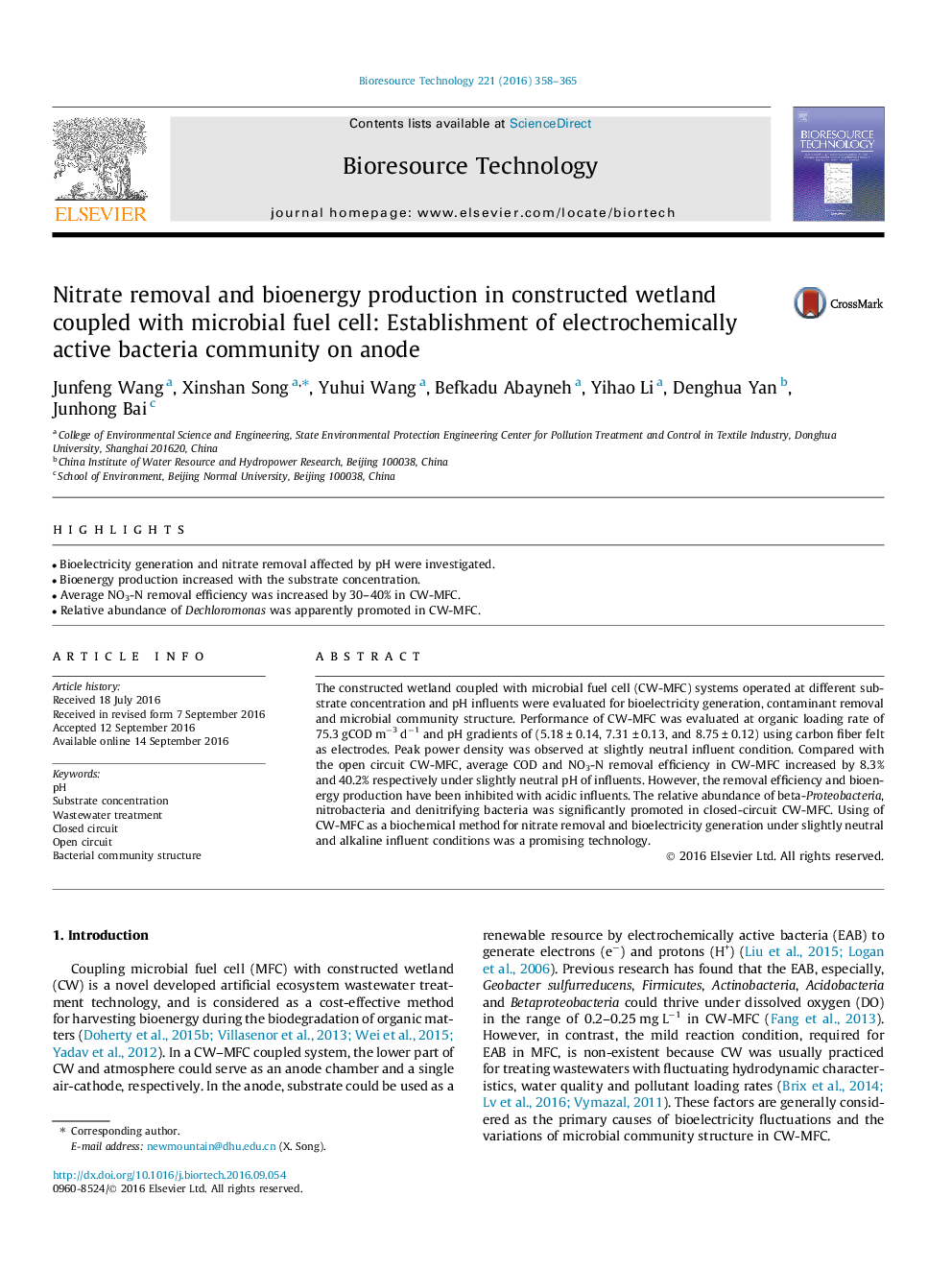| Article ID | Journal | Published Year | Pages | File Type |
|---|---|---|---|---|
| 4998047 | Bioresource Technology | 2016 | 8 Pages |
â¢Bioelectricity generation and nitrate removal affected by pH were investigated.â¢Bioenergy production increased with the substrate concentration.â¢Average NO3-N removal efficiency was increased by 30-40% in CW-MFC.â¢Relative abundance of Dechloromonas was apparently promoted in CW-MFC.
The constructed wetland coupled with microbial fuel cell (CW-MFC) systems operated at different substrate concentration and pH influents were evaluated for bioelectricity generation, contaminant removal and microbial community structure. Performance of CW-MFC was evaluated at organic loading rate of 75.3 gCOD mâ3 dâ1 and pH gradients of (5.18 ± 0.14, 7.31 ± 0.13, and 8.75 ± 0.12) using carbon fiber felt as electrodes. Peak power density was observed at slightly neutral influent condition. Compared with the open circuit CW-MFC, average COD and NO3-N removal efficiency in CW-MFC increased by 8.3% and 40.2% respectively under slightly neutral pH of influents. However, the removal efficiency and bioenergy production have been inhibited with acidic influents. The relative abundance of beta-Proteobacteria, nitrobacteria and denitrifying bacteria was significantly promoted in closed-circuit CW-MFC. Using of CW-MFC as a biochemical method for nitrate removal and bioelectricity generation under slightly neutral and alkaline influent conditions was a promising technology.
